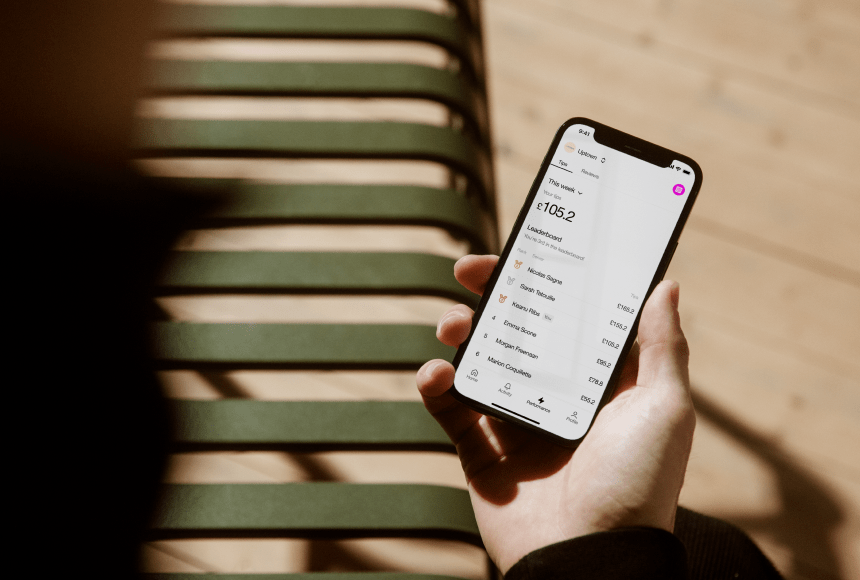
Design Pitfalls That Can Undermine Your Restaurant’s Menu in the Coming Year
Why Menu Design Still Matters—Even in 2025
In a dining landscape that’s becoming increasingly digitised and diverse, you might be tempted to see the physical or digital menu as just another routine piece of your restaurant’s day-to-day. Yet, how you structure, label, and present dishes remains one of the most direct ways to influence spending, shape diner experiences, and distinguish your brand. As UKHospitality notes, customer expectations in 2025 continue to pivot toward speed, convenience, and brand values—placing even more pressure on menus to engage, inform, and subtly persuade.
But designing a menu in 2025 doesn’t have to be daunting. You just need to avoid common errors that can alienate diners or undercut your revenue goals. Below are key pitfalls to steer clear of, so your menu can shine in a competitive industry—and keep your customers coming back for more.
1. Overcrowding the Menu with Options
It’s tempting to think: “More dishes, more chances to please everyone.” However, a sprawling menu can actually paralyse diners, leading them to pick the safest option or—worse—order less because they feel overwhelmed.
- Choice overload: If your menu reads like a short novel, you risk cognitively fatiguing guests. Diners may glaze over halfway through and miss your high-margin specials entirely.
- Kitchen strain: A large menu forces chefs to juggle numerous ingredients, boosting costs and increasing the likelihood of errors or slow service.
- Simpler is often stronger: Think about a curated set of dishes that showcases your unique selling points. Rotate seasonal specials instead of trying to cover every cuisine in one go.
By trimming unnecessary items, you create a sharper identity, giving each dish the spotlight it deserves. Customers will appreciate the clarity and can more easily identify what they’re craving—and hopefully spend a bit more.
2. Ignoring Clear Pricing and Psychology Basics
We’ve long known that small pricing tweaks can significantly impact ordering habits. But in 2025, diners are even more mindful of perceived value and financial transparency. Poorly executed pricing can send them straight to your competition or result in smaller ticket sizes.
- Unnecessary currency symbols: Many restaurants drop the £ sign and present prices as “14” or “14.50.” Removing that currency cue can subtly reduce price anxiety.
- Messy charm pricing: While “14.99” can look tacky in a refined setting, a neat “14.95” might sit better. The difference is small, but the overall impression matters.
- Lack of price anchoring: Having a flagship premium item (like a high-end steak or seafood platter) can make the rest of your dishes seem more affordable. If everything’s priced similarly, you miss a chance to guide diners toward moderate or higher-priced items.
Ultimately, diners shouldn’t feel blindsided by your pricing. Make it easy to interpret, consistent with your vibe, and mindful of subtle psychological cues to drive higher spend without seeming opportunistic.
3. Failing to Highlight High-Margin Items
If you have a fantastic chicken dish that’s also cost-effective to produce, you want diners to notice it quickly. Burying profitable plates among dozens of less profitable ones can undercut your revenue potential. Don’t assume customers will spontaneously find your hidden gems.
- Subtle emphasis: Use boxes, call-out text, or colour highlights to draw eyes to your star dishes, but avoid clutter. Overusing visual cues dilutes their effect.
- Descriptive names: Instead of “Chicken Salad,” try “Warm Rosemary Chicken Salad.” Vivid language conveys greater value and entices curious palates.
- Strategic pairing: Combine that profitable entrée with a recommended side or dessert, effectively boosting the average ticket without pushing too hard.
A bit of design or verbal flair helps diners see the value in what you want to sell. This nudge can lead them to choose the dish that not only delights their taste buds but also helps your margins.
4. Relying on Generic Descriptions or Outdated Terms
Menus that sound like they were pulled from a 2000s template risk appearing stale—particularly to younger diners who look for novelty and authenticity. Generic descriptors like “tasty,” “homemade,” or “fresh” are so overused they can actually ring hollow.
- Be specific: If something is locally sourced, name the farm. If it’s a unique cooking technique, mention it. “Pan-Seared Devon Trout with Herb Butter” offers a clearer, more enticing picture than “Fresh Trout.”
- Embrace storytelling: A short, playful mention—“Our family’s Sunday marinade recipe, perfected over decades”—adds personal warmth, connecting diners emotionally to your dish.
- Keep it modern: Terms like “artisan” or “fusion” might feel generic. Instead, focus on describing flavours, provenance, or unique selling points in honest, friendly language.
Authentic detail makes your dishes stand out. Provide enough to spark curiosity but avoid paragraphs of text. The sweet spot is a line or two that feels inviting and real, reflecting your brand’s character.
5. Forgetting Digital-Friendly Presentation
Gone are the days when every patron grabbed a paper menu. Many now scan a QR code to read a digital list, particularly if your restaurant uses solutions like sunday for quick, contactless experiences. Neglecting a digital-friendly design can hamper customer convenience and hamper sales.
- Responsive layout: Make sure your digital menu adjusts well to phone screens—no pinch-zooming required. Too-small text or misaligned images can push diners to skip reading entirely.
- Clickable sections: Break your menu into distinct clickable tabs—e.g., “Starters,” “Mains,” “Desserts,” “Drinks.” This structure stops diners from drowning in scrolling and helps them find what they want fast.
- Easy add-on prompts: On a digital interface, a well-placed suggestion—“Add a side of fries or upgrade to sweet potato fries?”—can gently nudge up the ticket total.
By aligning your physical and digital menus—and ensuring both are consistent and user-friendly—you show diners you’re serious about a seamless, modern dining experience, whether they’re ordering on-site or from home.
6. Overlooking Seasonal and Ethical Considerations
In 2025, diners across the UK and beyond care more about sustainability, ingredient origin, and alignment with dietary trends (like vegan or gluten-free). Failing to reflect these concerns in your menu might cost you a valuable segment of customers.
- No seasonal rotation: If your menu is static all year, it can come across as predictable. Introducing a seasonal section or rotating specials adds freshness and a sense of exclusivity—often justifying higher prices.
- Lack of transparent sourcing: When you use locally sourced ingredients or organic produce, mention it. Diners who prioritise ethical choices appreciate clarity, and it can justify a small price premium.
- Skipping dietary labels: V, VG, GF—these symbols are standard now. Don’t make customers guess. Label them, and watch how diners with dietary preferences respond with loyalty.
You might not convert your entire menu to a zero-waste extravaganza, but ignoring these trends can leave you behind. Even minimal changes, like highlighting a vegan dish or a local farm partner, can resonate strongly with modern diners.
7. Neglecting Staff Engagement and Training
Ultimately, your beautifully structured menu is only part of the story. If your staff can’t effectively talk about or upsell the items, your design improvements will fall flat. This mismatch can confuse customers and hamper sales.
- Regular briefings: Each time the menu updates—new items, changed ingredients—hold a short staff taste test or Q&A. They’ll speak more confidently if they’ve actually tried the dish themselves.
- Encourage storytelling: A well-trained server can expand on the brief description: “Chef picked this produce locally just yesterday,” or “We age the sauce for three days for extra depth.” Such details elevate the diner’s perception of value.
- Consistent messaging: If your menu calls a dessert “Chocolate Indulgence,” your staff should use the same name, not a random alternative. Consistency builds brand cohesiveness and avoids confusion at the table.
When staff wholeheartedly understand your menu’s logic—and your upsell strategies—they can amplify everything you’ve carefully designed on paper (or screen). That synergy often leads to higher average spend and better guest satisfaction.
8. Leaving Out the Payment Experience in the Overall Design
Menu design might focus on dish listings, but the final step—payment—crucially shapes how diners recall their experience. A clumsy, slow payment process can overshadow an otherwise delightful meal. As people embrace digital channels, a frictionless approach stands out.
- Incorporate digital conveniences: Tools like sunday let diners settle their bill by scanning a QR code—cutting out that last awkward wait for the card reader and freeing staff for other tasks.
- Possibility for immediate review prompts: A quick nudge to leave feedback or a Google review while paying can further your online presence. If the meal was outstanding, diners might leave a glowing comment on the spot.
- Encourage loyalty re-visits: Once the payment is done, a gentle “Hope to see you again soon—here’s a small discount for your next meal” can be included in the digital receipt or payment screen. This small step entices returning customers while they still feel the meal’s positive afterglow.
A well-structured menu extends right through the entire journey. Tying that logic to an efficient payment process ensures every part of the experience, from first glance at the menu to the final transaction, feels purposeful and cohesive.
Refining Your Menu to Meet 2025 Demands
Designing a menu that increases revenue and aligns with the modern diner’s mindset can be a challenge, but it’s far from impossible. By avoiding the major pitfalls—clutter, vague language, unhelpful digital layouts, outdated pricing strategies, and poor staff training—you’ll likely see an uptick in your bottom line. Diners appreciate clarity, authenticity, and a dash of excitement, and your menu stands at the centre of that intersection.
Take time to test changes, talk with your team, and track the impact on sales. Lean into the trends that matter most to your clientele—like local produce or climate-friendly offerings—without overwhelming them. And don’t forget the final mile: a hassle-free, integrated payment solution such as sunday, which can enhance the overall dining experience, encouraging customers to stay loyal and spend a little extra each visit.
Ultimately, being mindful of these typical mistakes—like ignoring design principles, burying your high-margin dishes, or missing out on the synergy between menu and payment—can differentiate a mediocre restaurant from one that thrives in 2025’s fast-evolving market. A well-crafted menu isn’t just a list of dishes; it’s a strategic tool for delivering hospitality, boosting sales, and keeping your guests excited about returning time and again.
Find out more today
Drop us your details below and we’ll reach out within the next 24
Make your menu work for you too.
With digital menus, you can manage different areas, times, menu types, add-ons, pictures, languages, allergen info and much more.


